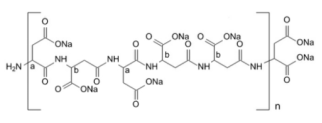
News
Ліст . 24, 2024 03:42 Back to list
edta chelation fertilizer
Understanding EDTA Chelation Fertilizers A Key to Enhanced Nutrient Uptake
Agriculture is continually evolving, and one of the most significant advancements in agricultural practices is the use of chelation technology. Among the various chelates available, EDTA (Ethylene Diamine Tetraacetic Acid) chelation fertilizers have gained prominence for their effectiveness in improving nutrient absorption in plants. This article seeks to explore EDTA chelation fertilizers, their benefits, and their role in sustainable agriculture.
What Are EDTA Chelation Fertilizers?
EDTA chelation fertilizers are nutrient formulations that include metal ions bound to EDTA molecules. This structure allows the nutrients to remain soluble and readily available to plants. Commonly used micronutrients in these fertilizers include iron (Fe), manganese (Mn), zinc (Zn), and copper (Cu). The chelation process prevents these nutrients from forming insoluble compounds in the soil, which would otherwise render them unavailable for plant uptake.
Importance of Micronutrients in Agriculture
Micronutrients, although required in small quantities, play crucial roles in plant growth and development. They are essential for various physiological processes, including photosynthesis, enzyme function, and nutrient transport. A deficiency in these nutrients can lead to poor plant health, reduced yields, and lower quality produce. As soils can often be depleted of essential micronutrients due to continuous cropping and other agricultural practices, using chelation fertilizers can be a viable solution to replenish these critical elements.
Benefits of EDTA Chelation Fertilizers
1. Enhanced Nutrient Availability One of the primary advantages of using EDTA chelation fertilizers is that they significantly improve the availability of micronutrients in the soil. Because these nutrients are protected from precipitating reactions, they remain in a soluble form, accessible to plant roots.
2. Targeted Application EDTA chelation fertilizers can be applied in various ways—through soil application, foliar sprays, or fertigation (injecting fertilizers into irrigation systems). This versatility allows farmers to precisely deliver nutrients where and when they are needed most, minimizing waste and maximizing efficiency.
edta chelation fertilizer

3. Prevention of Nutrient Lock-Up In many soils, especially alkaline and calcareous soils, micronutrients can become locked up in forms that plants cannot absorb. EDTA effectively counteracts this issue by keeping the nutrients soluble and bioavailable.
4. Improved Crop Quality and Yields By ensuring that plants have adequate access to essential micronutrients, EDTA chelation fertilizers can enhance overall crop quality and increase yields. Healthier plants are more resistant to diseases and pests, leading to better sustainability in agricultural practices.
5. Environmental Benefits Using chelation technology minimizes the risk of nutrient runoff into waterways, a common environmental concern with traditional fertilizers. By ensuring that nutrients are more effectively utilized by plants, EDTA chelation fertilizers contribute to reducing the environmental impact of farming.
Considerations for Use
While EDTA chelation fertilizers offer numerous advantages, there are essential considerations for their use. The choice of fertilizer should be based on soil tests to determine existing nutrient levels and specific crop requirements. Over-application can lead to nutrient imbalances, which can be detrimental to plant health.
Additionally, some environmental concerns have been raised regarding the long-term impact of EDTA in soil and water systems, as it can bind with heavy metals and alter their bioavailability. As such, it is crucial to follow recommended application rates and practices.
Conclusion
In the pursuit of sustainable and productive agriculture, EDTA chelation fertilizers represent a valuable tool for enhancing nutrient accessibility and improving crop performance. By fostering better micronutrient management, these fertilizers contribute to healthier plants, increased agricultural productivity, and reduced environmental impact. As farmers and agricultural scientists continue to explore innovative approaches to farming, the role of chelation technologies like EDTA will undoubtedly be central to achieving these goals. Through careful application and management, EDTA chelation fertilizers can pave the way for a more sustainable agricultural future, ensuring that we can meet the growing demands for food while protecting our natural resources.
-
Polyaspartic Acid Salts in Agricultural Fertilizers: A Sustainable Solution
NewsJul.21,2025
-
OEM Chelating Agent Preservative Supplier & Manufacturer High-Quality Customized Solutions
NewsJul.08,2025
-
OEM Potassium Chelating Agent Manufacturer - Custom Potassium Oxalate & Citrate Solutions
NewsJul.08,2025
-
OEM Pentasodium DTPA Chelating Agent Supplier & Manufacturer High Purity & Cost-Effective Solutions
NewsJul.08,2025
-
High-Efficiency Chelated Trace Elements Fertilizer Bulk Supplier & Manufacturer Quotes
NewsJul.07,2025
-
High Quality K Formation for a Chelating Agent – Reliable Manufacturer & Supplier
NewsJul.07,2025
